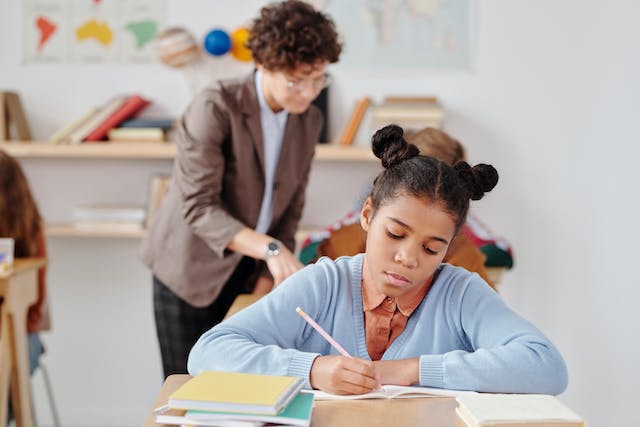Classroom management is the most significant challenge in a teacher’s job. As the digital revolution takes over our lives, engaging and monitoring students in the classroom is even more difficult. Teachers struggle to connect with a diversified set of students with different learning needs and need to work hard to find common ground where the entire class can focus on learning.
However, experts say teachers should learn to leverage technology and adopt smart class management strategies instead of trying to lure students away from technology and enforcing traditional methods. Using digital smart classroom tools can help create an effective learning environment that students find interesting and relevant.
Below are some tried and tested smart classroom strategies to help modern educators forge new paths in pedagogical management and get students excited about learning again.
Optimise Student Learning and Achievement with These Different Strategies
- Maintain a Positive Attitude
The first step to conquering a challenge is to introspect and build a positive attitude. The teacher’s attitude can profoundly impact the classroom atmosphere. Students find positive teachers approachable and respond to them with sincerity. Be strict, but always exude positivity in the classroom for all your learners.
- Use Signals to Get Attention
Define a simple signal in the classroom that can grab everyone’s attention. It could be a word, a hand signal, or a style of clapping your hands – but when you use it daily, all students will get accustomed to paying attention on cue. Reinforce it by starting the lesson only once the whole class is focused on you. You can use a special bell or alarm sound to create the same effect if you teach an online course.
- Change the Seating Arrangement
Reshuffling the students’ seats in the classroom can help the class focus better. Check whether the current seating arrangement blocks the view for some students or if someone is uncomfortable with their place in the class. It can help students refocus and feel at home in the class. If you have students with anxiety or depression, place them among friends or closer to the teacher’s table.

- Update Your Lesson Plan
Course content is well-received only when relevant and relatable to the students. Teachers and educators should update lesson plans every few years and incorporate smart class education techniques wherever possible. New teachers should spend time with the lesson plan to lend their perspectives and fresh ideas to the lessons.
- Give and Take Respect
Respect is mutual. Teachers should not expect students to respect them if they do not reciprocate the emotion. A greeting with a smile, a warm welcome at the beginning of the class, and a friendly goodbye whenever possible helps build a respectful friendship between teachers and students.
- Get Students Involved in Extra-curricular Activities
Teachers can use various features of smart classroom technology to organise extra-curricular activities. Students look forward to such activities and are excited to participate in them. Extra-curricular activities help students learn essential skills such as public speaking and art.
- Compliment Positive Behaviour
It is essential to point out bad behaviour, but complimenting positive behaviour is even more critical. Students with positive behaviour and habits should be encouraged with simple praise. It will inspire other students to behave like them and reinforce the importance of positive behaviour.
- Silence is the Right Tool
Teachers must exercise more patience and clarity of thought than any other professional. Teachers should keep a calm demeanour and low voice even when students are agitated. It will help the students regain their composure and maintain respectful behaviour towards their teacher.
- Create a Guideline for Disciplinary Measures
Discipline results from the fear of consequences. Students should understand what the effects of indiscipline will be. Drafting and enforcing clear guidelines for discipline will help students appreciate the importance of good behaviour. Digital classrooms can help reiterate policies effectively.
- Balance Friendliness and Authority
Students want their teachers to be friendly. However, teachers should not forget that they are the authoritative figures in the classroom. So, it is essential to strike a balance between friendliness and position. Offer a sympathetic ear and friendly advice whenever needed. But maintain a distance and respectful behaviour.


This blog was very informative on finding new technological classroom management skills that helps students connect. I can see myself as a future educator using the ten classroom management strategies to get students excited to learn!